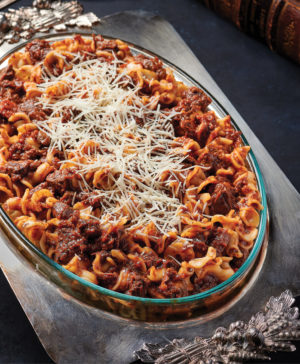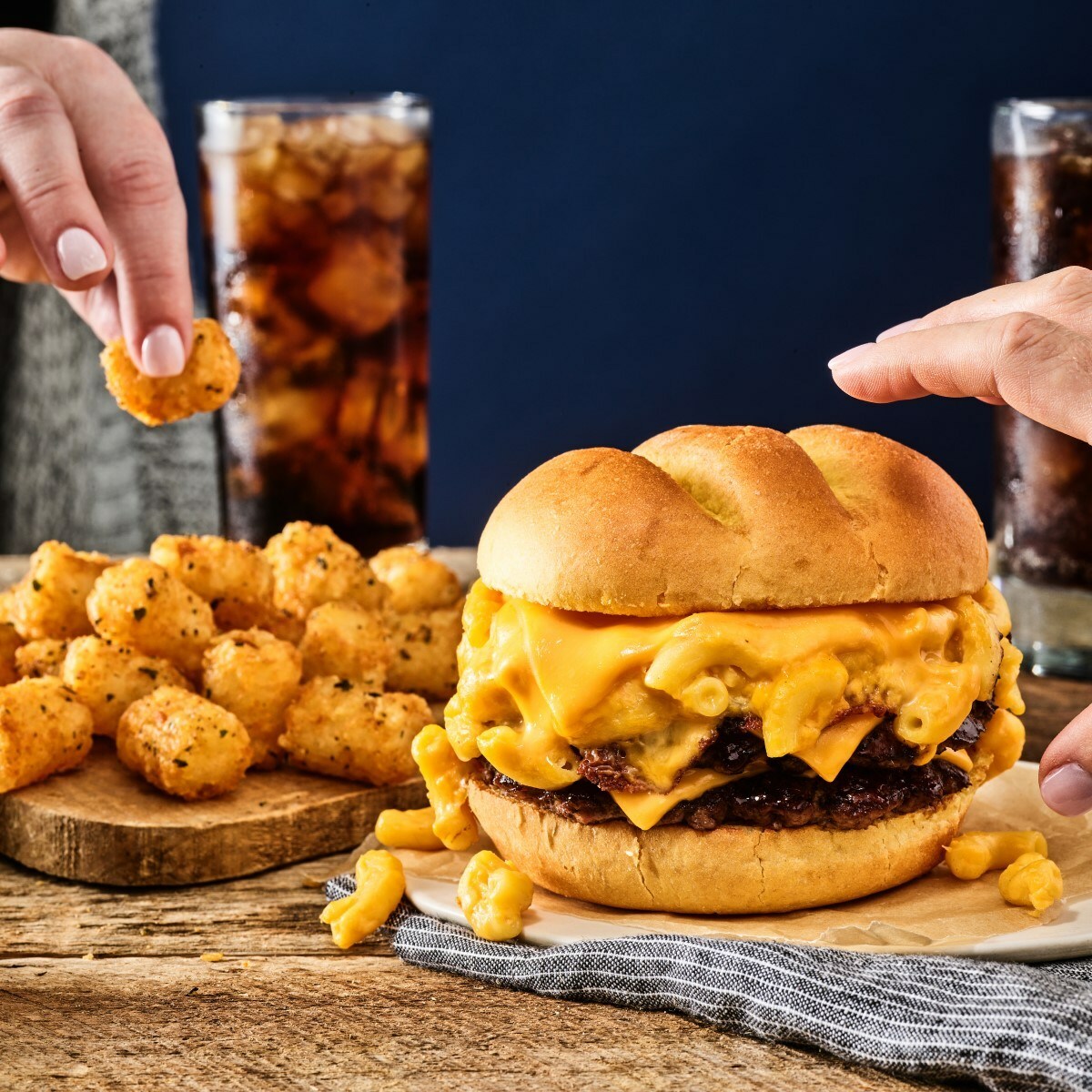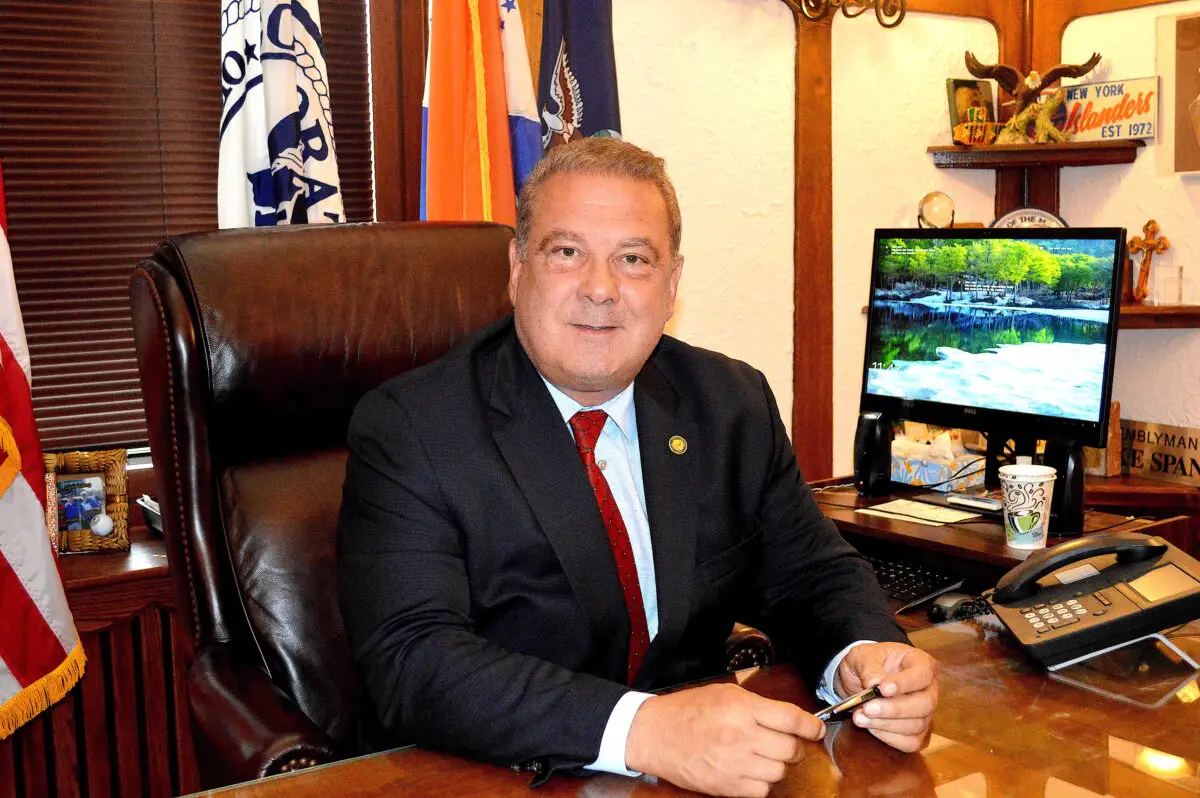
Abraham Lincoln loved its creamy, cheesy potatoes; Harry Truman, its steak; Richard Nixon, its coffee. And although every American president since James Monroe has reportedly dine there, its clientele was not limited to politicians.
Marilyn Monroe adored its grilled grapefruit; Cary Grant, its Port Wine Sangaree cocktail, made just for him; and Rock Hudson, its no-paparazzi privacy, while Wall Street financiers could relish their three-martini power lunches without missing a beat on the Street, thanks to the restaurant”™s New York Stock Exchange ticker tape. (Long before coworking spaces, Lehman Brothers had its own dining room there.)
Where the elite would meet ”“ along with anyone looking for a good meal in a hospitable environment, as all were welcomed ”“ was the fabled Delmonico”™s in a flat-iron building on Beaver and South William streets in Lower Manhattan.
“It was America”™s first fine-dining establishment,” said North Salem resident Max Tucci, author of the new book “The Delmonico Way: Sublime Entertaining & Legendary Recipes From the Restaurant That Made New York!” (Rizzoli New York, $45, 208 pages), who”™ll appear at an author talk and book-signing on Feb. 21 at Orienta restaurant in Greenwich.
Dinner at 8:10
Indeed, it would be hard to overestimate the effect Delmonico”™s had on American hospitality and cuisine in the course of a century under the direction of two different families, including Tucci”™s own.
Before Swiss brothers John and Peter Del-Monico opened their restaurant in 1830 ”“ it began as their pastry shop three years earlier ”“ Americans ate British-style food in taverns and inns. Delmonico”™s introduced them to French-flavored but locally sourced cuisine announced on menus printed in French and English and served on white tablecloths. The celebrated, and less so, took note. Charles Dickens and Mark Twain dined there. And women ”“ who heretofore could not eat in a restaurant unless accompanied by a man ”“ struck out on their own there, with the first women”™s power lunch, a meeting of the philanthropic Sorosis Club, taking place on April 20, 1868.
But no discussion of the first incarnation of Delmonico”™s would be complete without a mention of Nikola Tesla. Creator of the wireless, perfector of alternating current (which keeps the electricity on) ”“ the man whose name and 1870 engine design survive in a brand of electric vehicles ”“ Tesla would dine at Delmonico”™s every night, calling ahead for a dinner that could be served only by the head waiter at precisely 8:10. Changing several pairs of white gloves throughout the course of the meal, the scientist had his dinner and returned to work, refreshed by yet another Delmonico experience.
”˜All are welcome”™
That iteration of Delmonico”™s came to an end with Prohibition in 1923. But an exciting new chapter was about to begin, courtesy of an innovative Tuscan immigrant, Oscar Tucci, Max”™s grandfather. Operating Delmonico”™s for seven years as a basement speakeasy ”“ in which customers traded “Delmonico dollars” for drinks made from liquor that Oscar”™s wife, Sesta, would hide in their baby Mario”™s carriage ”“ Oscar would restore Delmonico”™s dining glory when Prohibition was repealed in 1933. Indeed, Max said, many of what we consider classic American dishes ”“ the Wedge Salad, Chicken à la King, Oysters Rockefeller, Lobster Newberg and Baked Alaska, among them ”“ were created or promoted at Delmonico”™s. As Max”™s father, Mario, and tough-minded Aunt Mary ”“ “she was my Auntie Mame, an iron fist in a lace glove, doing all the books” ”“ joined the business, new generations of power brokers and celebrities flocked to the restaurant.
“(Burlesque queen) Gypsy Rose Lee (who once did an impromptu striptease that ended with her wearing a menu), (actresses) Eva Gabor and Marlene Dietrich would come in,” Max recalled. It was where Hollywood and Wall Street would meet, along with everyone else, he added. For key to “The Delmonico Way” ”“ beyond the sumptuous dining, swanky décor and glittering patrons ”“ was an inclusive approach to hospitality.
“My grandfather Oscar would set a table for the homeless and feed them,” Max recalled, adding that among Delmonico”™s patrons was trans activist and performer Christine Jorgensen. “Oscar said that ”˜All are welcome at my table.”™”
Oscar died in 1969 on his birthday, June 4, and Delmonico”™s survived him until the early 1980s when New York City”™s financial and crime problems led the Tuccis to close the restaurant in Manhattan ”“ giving it another life in Greenwich, where Mario had an estate at Indian Harbor that once belonged to financier (and Delmonico”™s regular) J.P. Morgan. The restaurant lasted there at 55 Arch St. from 1983 until Mario died of a massive stroke in ”™87 on Max”™s birthday, Feb. 14.
Meanwhile, Delmonico”™s in Manhattan passed through other hands, although the Tuccis retained ownership of the building and licensing. Shuttered since the pandemic, Delmonico”™s is slated to reopen this fall, Max said, hinting that he may be involved in this next chapter.
Meanwhile, he added, “the Delmonico way” survived in those restaurateurs whose skills were honed at the restaurant, including Sirio Maccioni (Le Cirque), Tony May (San Domenico, the Rainbow Room); Lello Arpaia (Lello and Scarlatti); and Harry Poulakaktos (Harry”™s at Hanover Square). They in turn would train such restaurateurs as Daniel Boulud, Geoffrey Zakarian, Odette Fada, Donatella Arpaia and Scott Conant.
It is, Max writes in the book, “a unique family tree of the culinary industry” ”“ with the author himself as one of the branches.

”˜The Delmonico Way”™ in North Salem
“To talk about the present, we talk about the past,” Max said when we talked with him by phone as he basked in the afterglow of “The Grammy Awards” at the home of “CSI: Miami” star Eva LaRue. Max had been invited by friend Clive Davis, the record producer and Pound Ridge resident, to attend his annual pre-awards party at The Beverly Hilton in Beverly Hills, where “celebrities dripped from the chandeliers,” and Davis”™ post-awards party at the Polo Lounge at The Beverly Hills Hotel, which didn”™t wind down until 2:30 a.m.
As he unwound, Max ”“ who combines an engaging manner with a philosophical air ”“ recalled his relationship with a restaurant that has remained a touchstone. There were chores at Delmonico”™s, like cleaning the ashtrays ”“ and fun times like swiping pastries with sister Nicoletta and playing amid the coatroom furs. Still, Max”™s earliest professional ventures had more to do with mother Gina”™s groundbreaking fashion career than his father”™s culinary one. (She was the executive vice president of Maximilian Furs.) At 15, Max ”“ who attended The Harvey School in Katonah and St. Luke”™s School in New Canaan ”“ became the assistant to fashion photographer, model scout and agency owner Beth Boldt, who discovered Naomi Campbell. Fashion photography led to designing, public relations, a stint on “America”™s Next Top Model With Tyra Banks” and contributions to books by Al Roker, psychologist Grace Cornish and wellness expert Sister Jenna.
For 15 years, he”™s been the host of the “Max & Friends” podcast ”“ part recipes and recipes for life; dishes and dish. Around the time “Max & Friends” launched, the long probate of his father”™s estate came to end, giving him access to “the treasure trove” that was Delmonico”™s vault. The book he subsequently created would be rejected by 18 publishers. But, Max said, “rejection is protection.” At a Delmonico”™s party he threw for Whoopi Goldberg”™s 2019 book “The Unqualified Hostess: I Do It My Way So You Can Too!”, Max met Rizzoli New York publisher Charles Miers, who asked, “Why don”™t you have a book about this place?” Max replied, “That”™s because you haven”™t published it.”
It was Goldberg who told Max, living in Laurel Canyon in the Hollywood Hills at the time, “You”™re a New Yorker. You need to get back to New York.” In 2021, Max purchased the North Salem estate of the late artist Daniel Greene, with plans to turn the antique dairy farm”™s 6,000-square-foot barn, formerly Greene”™s studio and school, into a space for “Delmonico Way” dinners and other culinary experiences as well as for rent. ”¯
Max ”“ who divides his time among North Salem, Boulder, Colorado, Florida and Florence, Italy ”“ will also be charting “The Delmonico Way at Sea” with Variety Cruises to Greece in the summer of 2024.
Delmonico”™s sails on.
The team at Orienta launched the sip and shop luncheon event program on Dec. 1, partnering with fashion and accessories designers,”¯entrepreneurs”¯and local artisans from across the New York metro area. Lunch events are scheduled on a weekly basis. For more, visit orientarestaurant.com/lunch-events.
“The Delmonico Way” book signing and conversation with women’s executive empowerment coach Christine Mulhearne takes place from 11:45 a.m. to 2:30 p.m. Tuesday, Feb. 21, at Orienta restaurant in Greenwich. A donation to Food Rescue”¯will be made for each book purchased through the event and each lunch reservation made.”¯To order the cookbook through this event, email wedgesaladllc@gmail.com and include in the subject line, Orienta event. For reservations, call”¯203-489-3394 or email info@orientarestaurant.com.”¯
Other Max Tucci events include a Feb. 23 luncheon/cooking demonstration and author talk at Baldanza at the Schoolhouse in Wilton; a March 2 author talk and book signing at Elm Street Books in New Canaan; and an April 30 author talk at the Jay Heritage Center in Rye.
Follow him on Instagram @maxtucci and @thedelmonicoway.

Bolognese Al Coltello
The original Delmonico”™s was a French restaurant, but when Oscar (Tucci) took over, he incorporated Italian traditions into the menu, including authentic Bolognese ragù. Beatrice Tosti, chef and owner of Il Posto Accanto, says the only trick is to take your time.
Ingredients:
- 1 cup dried porcini mushrooms
- ¼ cup plus 1 tablespoon extra-virgin olive oil
- 6 ounces pancetta, cut into ½-inch dice
- 1 sweet Italian sausage, casing removed and crumbled
- 2 medium carrots, finely chopped
- 2 ribs celery, finely chopped
- 2 medium yellow onions, finely chopped
- 2 pounds beef skirt or chuck, cut into ½-inch dice
- 12 ounces pork shoulder, cut into ½-inch dice
- 12 ounces veal shoulder, cut into ½-inch dice
- Salt to taste
- 2 cups dry red wine
- 2 28-ounce cans crushed tomatoes
- Freshly ground black pepper to taste
Directions:
Soak the mushrooms in 2 1/2 cups warm water until pliable. Place a large heavy pot over medium-low heat. Add the olive oil, pancetta and sausage and cook until just golden. Add the carrots, celery and onions and cook, stirring occasionally, until the onion is translucent. Add the beef, pork and veal and cook over medium heat, stirring occasionally, until the meat begins to stick to the bottom of the pan, 5 to 10 minutes.
Drain the mushrooms. Strain the liquid to remove any grit. Chop the mushrooms into 1/2-inch dice. Add the chopped mushrooms and their liquid and season generously with salt. Cook, stirring occasionally, for 10 minutes. Add the wine and cook, stirring occasionally, until reduced completely, about 10 additional minutes. Add the tomatoes. Adjust salt and season with pepper and bring to boil, then reduce the heat as low as possible so that it is just barely simmering with a bubble breaking the surface occasionally and cook uncovered, stirring occasionally, until rich and dense, at least 2 hours.
Makes 2 to 2 ½ cups, enough for 6 servings.





















